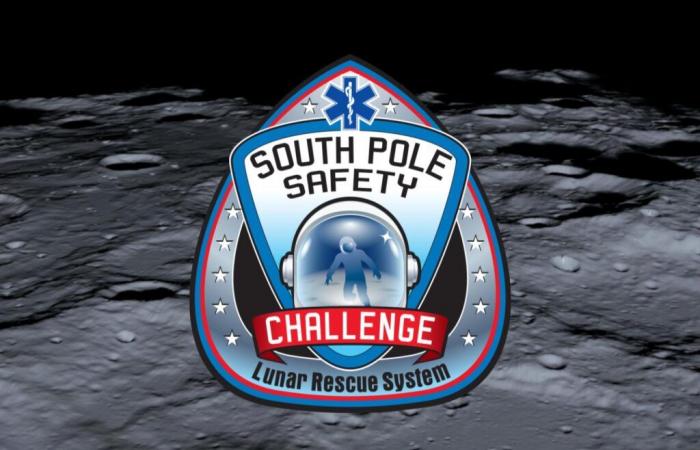The first astronauts to set foot on the Moon were well aware that nothing and no one could come to their aid in the event of a problem. But with the Artemis program, which must bring astronauts back to our satellite for the first time since Apollo 11, NASA no longer wants to leave the slightest room for these uncertainties. The American agency has just launched the South Pole Safety Challenge, an initiative which should make it possible to organize a lunar rescue mission as a last resort.
When Neil Armstrong, Buzz Aldrin, and Michael Collins set out to conquer the Moon for the first time on the Apollo 11 mission in 1969, they knew full well that it was an extremely risky mission. Between the takeoff of the Saturn V rocket and the module's atmospheric reentry, the mission had many potential breaking points, all of which could have had dramatic consequences.
An accident on the Moon, a terrifying prospect
NASA notably considered an accident during the moon landing phase, in which only Aldrin and Armstrong took part while Collins remained in orbit in the capsule. In the event of a problem, it was planned that the latter would return to Earth alone. Due to lack of technical means, he would have been forced toabandon his two compatriots in the middle of these barren plains where they would have ended up suffocating a few hours later.
Even if no one really wanted to publicly discuss these terrifying scenarios, there was a significant probability that the crew would never return from their historic expedition. The President of the United States, Richard Nixon, even had a speech prepared to deal with this eventuality. “ Destiny wanted that the men who went to the Moon to explore it in peace would stay on the Moon to rest in peace. », solemnly announced the introductory sentence.
Fortunately, the three heroes returned to Earth in perfect health, and this morbid speech never came out of its envelope. But with the advancement of the Artemis program, the question of risk is starting to become relevant again. Fortunately, five decades after the famous “ giant step for humanity “, technology has also made immense progress, so that those involved in the project will not be completely helpless in the event of a possible accident. This time, NASA has no plans to write a preemptive eulogy. Instead, she officially announced the launch of South Pole Safety Challengean initiative specifically dedicated to rescuing an astronaut in distress.
A rescue system for astronauts in distress
The idea is to solicit individuals and industry by asking them to submit a solution that would allow an astronaut to rescue an unconscious colleague, then bring him back to the Human Landing System (the ship responsible for depositing them on the surface of the Moon) so that he can be treated and/or repatriated.
At first glance, this description sounds like that of a simple stretcher. But in an environment as hostile as the Moon, this is quite an engineering challenge.
The main constraint is the terrain of our satellite. The surface of the Moon is covered in regolith, an extremely abrasive rock dust that can easily damage any mechanical element. In addition, it is dotted with rocks and sometimes enormous craters which make navigation very difficult – especially in an environment subject to extreme temperatures where lighting conditions are far from ideal.
Transporting an adult person equipped with a very bulky diving suit in these conditions will therefore require a very specialized device. According to NASA's specifications, it must be capable of transporting an astronaut over a distance of two kilometers with an average slope of 20°, without depending on the assistance of a lunar rover. It must also be very light and easy to deploy by an isolated astronaut.
« Your creativity and expertise could fill this critical gap, improving safety measures for future lunar explorers », Explain NASA officials in the press release. “ By taking on this challenge, you have the opportunity to contribute to the next “giant leap” in human space exploration. »
If you have the necessary technical skills, you too can contribute to this initiative. Simply submit your design concept on the program page, at this address, before January 23, alone or as a team.
Design concepts can be submitted by individuals or a team until January 23, 2025. For more information about the challenge, including guidelines and how to participate, visit the HeroX online page. A total of $45,000 in prizes will be distributed among the five winning entrants, including one first and second place winner and up to three third place winners, who will be announced on February 27, 2025.
???? To not miss any news on the Journal du Geek, subscribe on Google News. And if you love us, we have a newsletter every morning.





